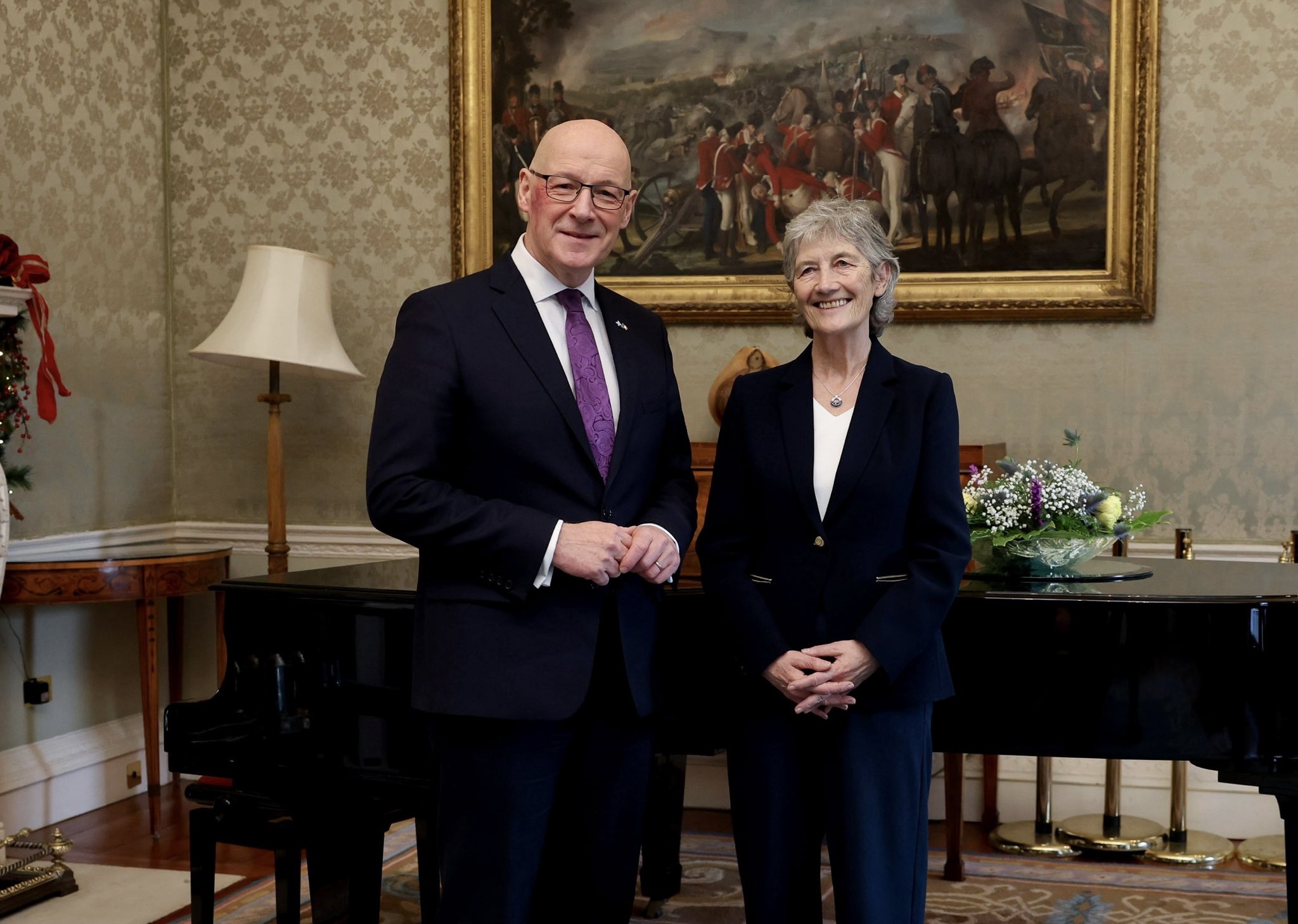This week Catherine Connolly, the newly elected President of Ireland, welcomed John Swinney, First Minister of Scotland, to the Áras an Uachtaráin, official residence of the republic’s head of state. Her government X account posted some photographs of the meeting and described Swinney, who leads Scotland’s secessionist Scottish National party, as ‘the first foreign head of government received by President Connolly’.
This was a statement of fact, but feelings don’t care about your facts, and so Connolly has found herself scolded on both sides of the Irish Sea. She has been told with the invincible confidence of the ignorant that she has insulted the UK’s Prime Minister. After all, Keir Starmer is the head of government in the UK.
The purpose of the Labour party is to begin revolutions; the purpose of the Conservative party is to make those revolutions permanent
Yes, he is. Yet it remains the case that Swinney is the first foreign head of government received by Connolly. The devolved administration in Edinburgh is not merely an ‘executive’ like Stormont. It is a government: the Scottish government. If you disagree, or believe that to be political branding, your beef is not with me but with UK constitutional law.
When Labour established devolution via the 1998 Scotland Act, it legislated for ‘a Scottish executive’, an administration ‘referred to collectively as the Scottish Ministers’. And so it was until 2007, when the very thing devolution was supposed to prevent — a rise in Scottish nationalism — saw the SNP win a Holyrood election and take control of the devolved proto-state kindly set up by Labour. One of Alex Salmond’s first acts was to unilaterally rebrand the executive as ‘the Scottish government’. A rebrand was all that was open to him since the Scotland Act was a reserved matter, wholly within the purview of the UK Parliament. (It’s worth noting that the rebrand idea did not originate with Salmond but with the Scotland-based branch of the UK Civil Service, an institution which did not ‘go native’ under the SNP so much as reflect the midwit cultural nationalism of the educated middle classes.)
Salmond’s gambit was, in rhetorical terms at least, a naked power grab, putting the British state on notice that having set up a rival political apparatus to Westminster, that apparatus was now under the control of those sworn to push Westminster’s authority out of Scotland. Because the British state is a joint enterprise between those indifferent to Britain’s interests and those openly hostile to them, Westminster responded not by forcing Salmond to reverse course but by bowing to his little act of rebellion. Salmond let Downing Street know who was in charge and Downing Street nodded dutifully along.
In fact, it did more than merely acquiesce. During the 1997 referendum campaign, the Conservatives opposed devolution as Tony Blair’s reckless constitutional revolution, bound to weaken the United Kingdom and enable separatism. So naturally when they returned to power in 2010 the Tories set about entrenching Blair’s revolution. They passed two new Scotland Acts, in 2012 and 2016, transferring vast tranches of powers from Westminster to Holyrood. These included increased powers over taxation and new powers to run a separate Scottish benefits system. That was how to protect Our Precious Union: allow the SNP to raise taxes to fund the creation of new welfare payments. All the clever people said so.
(The Tory defence is they did not act alone but with the agreement of Labour and the Lib Dems. In the Tory mind, this is a solid mitigating factor rather than an admission that their party has no constitutional philosophy beyond establishing the midway point between themselves and the left – and then overshooting it handsomely.)
While they were busy giving the SNP a new mechanism with which to buy votes, the Tories also thought it would be a lark to amend the Scotland Act to rename the Scottish executive ‘the Scottish government’. Then, four years later, just to make clear their commitment to ever-more-devolution, the Conservatives amended the Scotland Act again, this time to state: ‘The Scottish Parliament and the Scottish government are a permanent part of the United Kingdom’s constitutional arrangements.’ These bodies, per this 2016 legislation, were ‘not to be abolished except on the basis of a decision of the people of Scotland voting in a referendum’.
Nothing and no one compelled the Conservatives to do any of this. They could have left devolution well alone, they could have reined in its excesses, or they could have scrapped it altogether. Entrenching it was a choice. It is the choice Tories reliably make when presented an opportunity to undo the errors of the left. As G.K. Chesterton observed: ‘The business of Progressives is to go on making mistakes. The business of Conservatives is to prevent mistakes from being corrected.’ Put another way, the purpose of the Labour party is to begin revolutions; the purpose of the Conservative party is to make those revolutions permanent.
So, yes, John Swinney is a head of government, and he holds that post not because of any votes cast by the electorate but because the Conservatives changed the law to make it that way. The UK’s constitutional settlement has been insulted all right, but not by Catherine Connolly. She merely showed us our blunders and foolish notions for what they are.









Comments